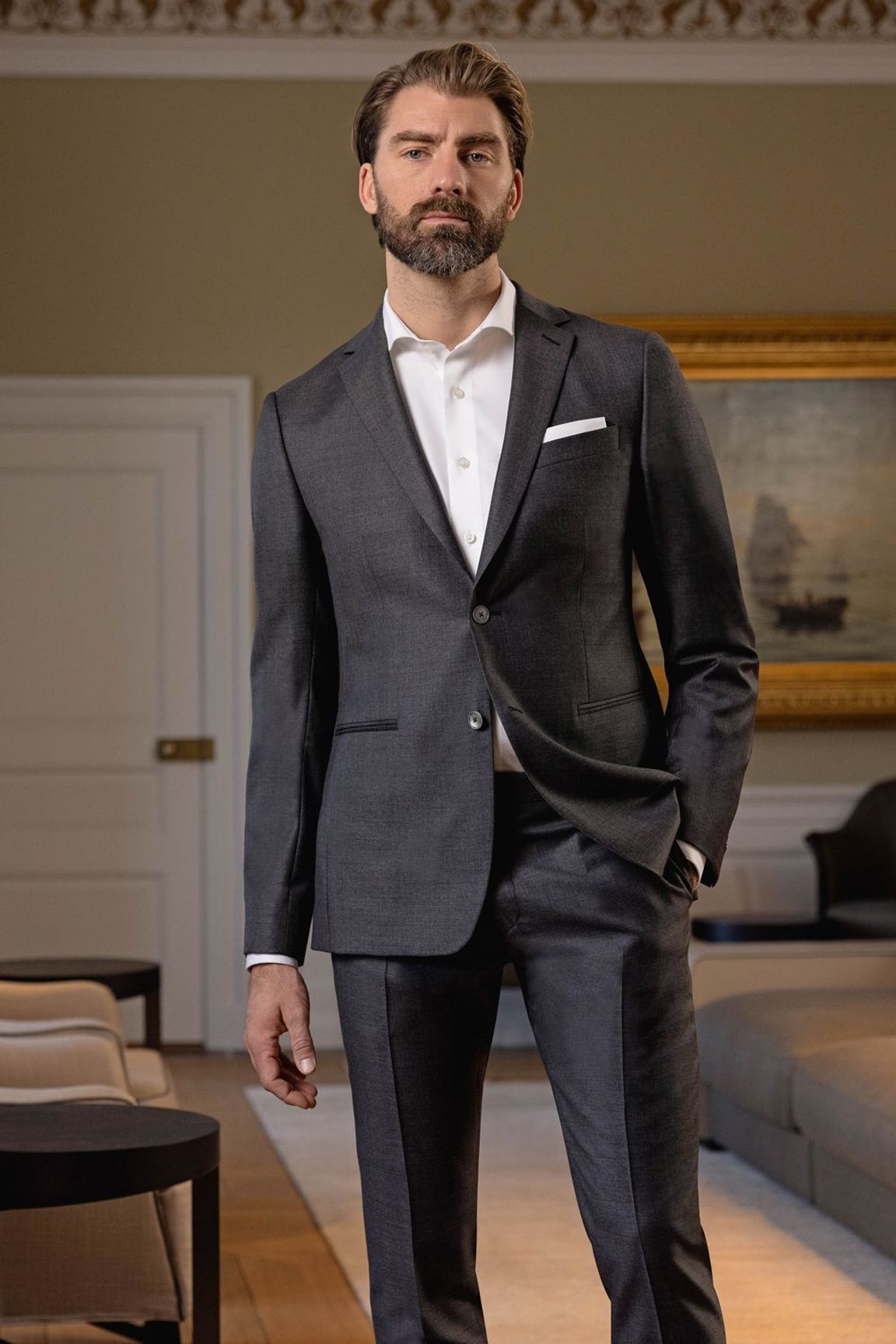Recognizing the Tailoring Refine: From Material Selection to Final Fitting for the Suitable Wardrobe
The tailoring process is a complicated interplay of art and scientific research, starting with the essential decision of material option and finishing in the exact modifications of final fittings. Each textile type brings unique high qualities that influence not only the aesthetic allure but additionally the garment's long life and suitability for numerous events. Comprehending the nuances of customizing strategies can elevate one's closet to unmatched degrees of refinement. As we discover these aspects further, one should take into consideration exactly how also the smallest information can substantially impact the total outcome of one's personal style.
Significance of Material Option
Picking the ideal fabric is critical in the tailoring process, as it straight influences the comfort, toughness, and total visual of the last garment. The choice of fabric sets the structure for the garment's efficiency, functionality, and style. Different fabrics have one-of-a-kind properties, such as breathability, stretch, and weight, which can significantly influence exactly how the garment drapes and fits the body.

A tailored piece made from a proper fabric not only showcases craftsmanship however likewise boosts the user's confidence. As a result, recognizing the nuances of textile option is vital for any customizing endeavor. It makes certain that the end product not only meets the aesthetic desires of the client but also straightens with functional requirements, thereby attaining an unified balance between type and function in the tailored wardrobe.
Kinds of Fabrics and Their Usages
Recognizing the numerous kinds of materials offered is vital for making informed decisions throughout the customizing process. Each fabric has distinct qualities that determine its viability for particular garments and occasions.
Its convenience allows it to be customized right into everything from t-shirts to gowns. Its natural elasticity helps garments keep form over time.
Silk exudes deluxe and is light-weight, making it perfect for eveningwear and fragile blouses; nevertheless, it calls for careful handling because of its fragility. Linen, with its distinctive surface, is a preferred option for cozy climates, providing a crisp and ventilated feel, but it wrinkles quickly, which may affect the garment's appearance.
Artificial textiles, such as polyester and nylon, offer durability and resistance to wrinkles, making them appropriate for day-to-day wear and active clothing. Recognizing these textile types and their residential properties permits for better decision-making, ensuring that each customized item not only fits well however also straightens with the desired purpose and event.
The Tailoring Techniques Explained
The art of tailoring counts on a range of techniques that transform material right into well-fitted garments. Central to this process is pattern preparing, where a dressmaker produces design templates based on the client's measurements and preferred style. This initial action guarantees that the garment will certainly fit the wearer effectively before any cutting happens.
As soon as patterns are established, cutting techniques come right into play. Precision is extremely important as mistakes can bring about misfitting garments. Tailors typically make use of different cutting approaches, such as single-layer reducing for detailed layouts and multiple-layer reducing for efficiency on conventional patterns.
Basting is an additional crucial technique, allowing dressmakers to briefly sew fabric pieces together for a preliminary installation (tailor suits perth). This technique provides the opportunity to evaluate the drape and total shape prior to last stitching
Seaming methods, consisting of flat-felled seams and French seams, enhance the garment's resilience and aesthetic appeal. Tailors also pop over to these guys employ methods such as interfacing and cushioning to give framework and form to details locations, like collars and shoulders.
Last but not least, ending up techniques, consisting of hemming and edge ending up, ensure the garment's longevity while giving a sleek appearance. Together, these techniques create the foundation of efficient tailoring, resulting in exquisite, tailor-made clothing.

Suitable Adjustments and Factors To Consider
After the initial customizing strategies have been used and the garment is built, suitable modifications end up being extremely important to achieving the ideal fit. These modifications attend to numerous aspects of the garment, guaranteeing it contours to the wearer's physique and enhances general look.

The surge of pants is one more important aspect; it needs to sit comfortably over the hips without creating pain, permitting ease of movement. Hemming sizes for both pants and skirts should mirror the wearer's favored style while valuing percentages.
Additionally, attention should be site here provided to the rear of the garment, guaranteeing that there are no unsightly pulls or excess textile - top tailor perth. Each adjustment should be meticulously taken into consideration, as also minor changes can dramatically affect the overall fit and visual of the tailored piece, eventually resulting in a closet that shows confidence and sophistication
Keeping Your Tailored Clothing
Always adhere to the care label instructions, which might recommend completely dry cleaning for delicate materials or maker washing for more long lasting materials. Prevent constant laundering, as this can wear down the material and modify the garment's shape.
Storage space is equally crucial; usage padded hangers for coats and coats to preserve shoulder framework, and shop trousers folded nicely or hung to stop creasing. Secure garments from straight sunlight, which can discolor shades and damage fibers.
In addition, routine assessments for small fixings can protect against bigger concerns. Look for loose switches, tearing seams, or indications of moth damage, resolving these problems immediately to maintain the garment's stability.
Last but not least, think about seasonal turning. Putting on customized items in small amounts permits textiles to recoup, expanding their life expectancy. By carrying out these upkeep strategies, you can make sure that your tailored garments stay as beautiful as the day you first used them, boosting your excellent closet for many years to come.
Verdict
The tailoring procedure, including fabric choice, experienced strategies, and accurate suitable modifications, plays a crucial function in developing pop over to these guys garments that improve both convenience and style. Recognizing the significance of upkeep extends the life of customized garments, strengthening their value in a well-curated closet.